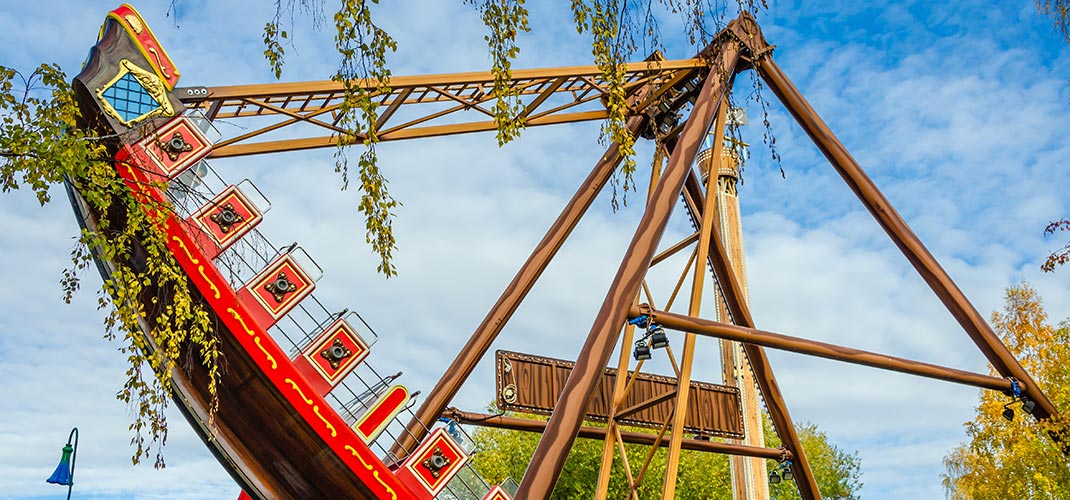All work but no play? What are the benefits of leisure-specific need assessments?

Leisure-specific need assessments are increasingly being required by Local Planning Authorities to provide evidence in support of planning applications for new facilities at visitor attractions. In some cases, planning authorities will extend this request to ask for a viability assessment to prove that the proposed plans are not simply a means to gain permission for any form of development in the countryside to subsequently apply for a different – perhaps more profitable, but less policy compliant - use on the basis that the visitor facility is otherwise no longer viable.
In order to provide a credible report, which may have to stand up to cross examination at a planning hearing or inquiry, it is necessary to undertake a thorough analysis of current demand for the proposed facility, coupled with a full analysis of the competing supply within the same market catchment.
Defining catchment areas
The catchment area can normally be defined through a spatial analysis of existing customer addresses through aggregated, anonymised booking data. It is important to note that the catchment needs to reflect the reach of the attraction for the ‘normal’ majority of visitors and should not extend to include more exceptional and distant travellers.
Once a sensible catchment area has been defined, it will be necessary to analyse the population size, age structure, and socio-economic or market characteristics of that catchment and compare these to the type of person that is being attracted to the visitor attraction, or the type of person that the proposed new facility will seek to attract. The fundamental question that we’re seeking to answer is: are there enough people in the catchment area, of the right age and social profile, to justify the proposed facility?
Establishing supply and demand
To help answer this question, it will be necessary to conduct an analysis of national trends for the type of facility you are proposing, to identify any growth or decline in demand from a particular demographic of users. A key recent example being the rapid growth of ‘experiential leisure’ concepts such as trampolining and indoor crazy golf, driven largely by millennials eager to stretch boundaries through more immersive experiences that are physical, memorable and imaginative and can be widely shared on social media.
Once a review of demand factors has been completed it will be necessary to review the competitive supply of the type of facility proposed within the same catchment area. In doing this, a review of competing supply just outside the catchment boundaries will be useful to avoid accusations of deliberately drawing a conveniently smaller catchment to avoid recognising such competition.
In considering competing leisure facilities it will be necessary to review their size, visitor numbers, price points, any ancillary and supporting facilities, the overall quality of the attraction, and its distance from the proposal site. Although a lot of information can be gathered online or via telephone calls, depending on the type of facility proposed and the available budget for the study, it can be a good idea to verify this information by visiting the competing facilities as a mystery shopper in the interest of a robust analysis.
Assessing need
Once the demand and supply information has been gathered, it can be combined to prepare the need assessment. This can be an objective quantitative assessment comparing the number of likely target customers within the catchment area to the number of visitors currently visiting such a facility in the same area. If the target population exceeds the current number of visitors, then it can be argued that there is a deficit, and therefore a need, within the catchment area. Need can also be assessed in qualitative terms, in that there may be a quality deficit within the catchment area. This qualitative assessment may still be performed in objective terms through a tabulated checklist of key quality factors at each competing attraction.
Assessing Viability
Where a local authority also requires a viability appraisal or business plan, information from the need assessment will be necessary to inform the assumptions of that appraisal. In simple terms, the viability will assess whether the development and operational costs of the proposed facility can be repaid by reasonable assumptions of visitor numbers and income drawn from the demand and supply analysis. If adding a facility to an existing attraction, then it will also be reasonable to include additional income received by new visitors to present spending opportunities at the existing attraction, such as catering facilities.
Examples
We recently undertook a need assessment for a proposed new outdoor sport and leisure visitor attraction, incorporating an activity lake with inflatable aqua park, kayaking, rowing and paddleboarding, equestrian centre, fishing lakes and sports centre, along with visitor accommodation. The local authority was concerned that there was insufficient demand for the proposed facilities and that once the principle of developing the site had been established, the applicant may attempt to secure permission for an alternative form of development.
To address this concern, Avison Young’s Leisure team was appointed to assess the need for the proposals by establishing the catchment area for each of the component parts of the scheme, generating robust and defensible assessments of both the existing supply and the likely demand for each of those proposed uses, and advising on any other potential facilities, which are undersupplied in the local area but would be compatible with the proposed scheme and could perhaps be incorporated.
Our conclusion in this case was that the unique combination of an extensive range of water- and land-based sporting facilities alongside a flexible range of overnight accommodation, would create a sustainable business for the proposed sporting leisure-based overnight and day visitor attraction. This need assessment has now been submitted by our client’s planning consultants in support of their planning application.
As another example, our Leisure team were commissioned by a local authority to advise on the need and viability of holiday accommodation proposed to support a large visitor attraction. The applicant’s planning consultants had argued that the large number of holiday units proposed was the minimum required to create a viable return. Our financial viability assessment and report drew on the Leisure team’s specialist planning, agency and valuation expertise, with QS input from Avison Young’s Building Consultancy team.
Although, we found that the proposed accommodation would be viable at a much lower number of units, we concluded that it may be that the applicant required the additional visitor income to help justify the long-term future of the visitor attraction. While there was no satisfactory viability evidence provided by the applicant, the Council decided to grant planning permission on the basis of the economic importance of the attraction to the area.
Conclusion
Where planning applications are made for new facilities at visitor attractions that will lead to the loss of open countryside, Green Belt land, or other designated landscapes, local authorities will require additional expert assessments to demonstrate the need for that development, which they can use to weigh in the planning balance in support of an application against wider constraints. Equally clients benefit from having a holistic assessment of the demand potential for proposed development plans and avoiding development where there may be insufficient demand.
Contact:

